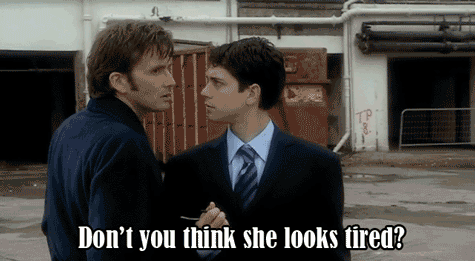Disclaimer: This is a personal blog that is not affiliated with any research institution, funding body or charity. The British Heart Foundation is a very nice charity that does amazing things – donate your used goods to them today! This piece has not been endorsed by Professor B. Casadei or any member of her research group, and should not reflect upon her or her opinions in any way. As someone who writes frequently about sexism in science culture, I believe that criticizing the following article from a gender-egalitarian perspective will move the field forward, reduce the levels of sexism in science, and possibly improve reporting quality in the future.
The British Heart Foundation is a popular and beloved charity in Britain, funding over half of the cardiovascular research performed in the British Isles. Non-academic readers may be surprised to learn that charitable funding is how a lot of scientists pay the rent.
For me, this is one reason why consistent, trustworthy, high-quality science communication is so important. The public pays our wages, whether by charity or by tax dollars. Public interest and public trust is vital if we want to cure cancer, heal hearts, save the environment, fight off meteors, survive climate change and understand the meaning of life. None of this can happen without you guys. Thank you so much for your help and support.
So when I see really terrible, sexist science reporting occurring in the pages of the British Heart Foundation’s magazine, well … it breaks my little heart. (Which is ironic.) I believe that science communication at every level is charged with moving the field forward, and I believe that it should be held responsible when it breaks that trust.
The BHF’s circular Heart Matters is supposed to reach out and reassure people in waiting rooms that their health is well in hand, that research is chugging away to make their lives happier and healthier, and their charity dollars are being well-spent. Most recently, it stuck a prominent female professor on the Jan-Feb cover and wrote a puff piece about her recent BHF award.
The piece, “Lady in the Lab,” is jaw-droppingly sexist.
Professor Barbara Casadei is a great role model for young women in science: successful, intelligent, dynamic, generous, happy. She is a full professor at Oxford, leading a powerful and impressive cardiovascular research group. She is highly involved with the Athena Swan Charter, which works to promote women’s research careers in the STEM fields. If you’ve been following my Girls in Science series, you’ll remember that I believe that providing career support is the only solution to solving the gender gap. Well, Professor Casadei is working on that very problem, as well as developing new treatments for atrial fibrillation that will hopefully reduce the danger involved in heart surgery!
How does the BHF choose to introduce this remarkable scientist?
Barbara Casadei doesn’t exactly fit the traditional stereotype of a science professor.
Slim and elegant with long, blonde hair and oozing charisma, she’d look just as at home on the society pages of Tatler as in a lab.

no, this is the opposite of what we wanted
And of course, as a woman, she’s still sadly a rarity in the higher echelons of academia.
Well then.
That’s how: by opening the article about her life and work by objectifying her and claiming that she belongs in a driveling fashion mag… and then acting surprised that there aren’t too many women at her level… while apparently missing the fact that the BHF gets to pick those who get swept into those “higher echelons.” After that, it gets better (worse) as Casadei’s remarkable life and work are overshadowed by awful reporting. Because nothing inspires young women to do well in science more than seeing that a Professor – the highest scientific position attainable – can be given a platform from which to explain that salt makes one bloat. Yes, if we climb the highest mountain, we too can answer questions about whether or not our lifestyle allows us time to prepare healthy family meals from scratch!
What else is terrible? Well….
- The article opens – and closes – with borderline-insulting references to Casadei’s physical appearance. The insulting tone of surprise and astonishment (“Phwoah, a sexy scientist!”) at once suggests that scientists are not supposed to be attractive women, and that non-sexy women will not be welcomed as BHF covergirls.
- “Slim, blonde and elegant” – really? Really.
- Likewise “oozing charisma.” Ladies don’t ooze, darling, they radiate.
- The article has a special feature of “Barbara’s diet tips” to “stay in shape.” While this is to some extent expected in a cardiovascular health magazine geared towards the public, the radical idea that one can control calories by ordering salad dressing on the side is not exactly what I would pick an Oxford professor’s brain over.
- How does she stay so slim and elegant? Grilled 30-minute meals, apparently. How does she cope in a culture where even a complimentary puff piece about her drips with sexism and condescension? The reporter doesn’t care.
- The reporter calls Professor Casadei “Barbara” throughout. As Casadei is, by her own merit, a Professor, a Chair and a Doctor, by marriage a Mrs and a Lady, and would by most journalistic standards just be referred to as Casadei (as I’m doing) this reporter calls her Barbara. Even if Casadei politely asked the reporter to call her Barbara during the interview, respect and standards dictate that the scientist ought to be “Casadei” in the actual piece. Men interviewed in Heart Matters are referred to by title. Casadei’s husband is referred to as Professor Sir Rory Collins, Chair. There is literally no excuse to continually refer to Casadei by her first name.
- The reporter claims to be intimidated by Casadei’s academic accomplishments; she states that the professor’s 14-page CV has given her “an inferiority complex.” Men with lesser accomplishments in Heart Matters are treated with respect and their CVs are regarded as impressive.
- The reporter states that Casadei’s home must be a “motivating environment” as her husband is also successful.
- An actual interview question: “Being so busy all the time must be exhausting. Does it ever get [to be] too much?” (This may be a bit more subtle – the reporter possibly doesn’t realize that the “Don’t you think she looks tired?” gambit is a popular way to undermine the achievements and positions of middle-aged women, who only need to publicly demonstrate wrinkles or grey hair to be perceived as unfit leaders.)

In the popular British tv series Doctor Who, the Doctor promised to bring down a female Prime Minister’s government with six words: “Don’t you think she looks tired?” As promised, the middle-aged woman was quickly agreed to be no longer fit for her position and was forced to resign.

Hillary Clinton, the former American Secretary of State, suffered from rumors that ill health and tiredness made her unfit to hold a political position. During the 2008 presidential campaign, conservatives circulated photos of 61-year-old candidate Clinton looking weary, implying that nobody wanted a tired/old woman in power. Rush Limbaugh asked, ‘‘will this country want to actually watch a woman get older before their eyes on a daily basis?’’
- It’s possible that the reporter was blissfully unaware that describing a successful middle-aged woman’s schedule as “punishing” and “exhausting” undermines the perceptions of the scientist in question. But that’s no excuse for her to follow it up in the style of: “with your punishing lifestyle, how do you still manage to cook fresh, wholesome meals for your family? With your exhausting commitments, how do you maintain such a motivating home that nourishes your husband’s career so well?”
- Emphasis was continually placed on the professor’s domestic abilities.
- The closing of the article notes that Casadei was patient and capable throughout the photoshoot, and uses that as evidence that her students couldn’t have a better role model.
- This, combined with the Tatler allusion, makes it pretty clear that Casadei is being valued for her model-like looks.
- The tone of the article treats Professor Casadei as a superlative woman, while pretending that it is difficult to understand why she is the only woman in the position of BHF Chair. The 49 other Chairs are men.
- Absolutely no recognition was made on the part of the BHF that they are at least partially responsible for their promotion practices – as one colleague put it, “I was especially surprised by their highlighting that she was indeed this one [superlative] woman to have gotten the chair, without any reflection whatsoever on their own practices in awarding said chair mostly to men!”
- The very title – “Lady in the Lab” – carries unfortunate connotations. (Angel in the kitchen, whore in the bedroom, etc.) The phrase “Lady” is hardly ever used respectfully, and when it is, it is in reference to perceived social class and submissive feminine qualities that are no longer complimentary. Now, I’ve looked it up, and Casadei’s marriage to a Sir makes her eligible to be referred to as a Lady – which begs the question of why the BHF is titling an article about her with a reference to her husband’s status? As I’ve said before, the title of full Professor is the highest status that an academic scientist can achieve – and it’s one that Casadei has earned and fought for. Why not just finish it off and call her “Hausfrau in the Halls” or “Hot Mama Heart Scientist.”
When Casadei speaks for herself, her voice is powerful and inspiring. Read the article to appreciate it!
“There’s no question that women can do science as well as men,” [Casadei] says. “But there’s a lot of subtle messaging that implies science is for boys and the arts are for girls. As a result, girls aren’t encouraged in the same way.”
But she’s only allowed a passing reference to the Athena Swan Charter – cast as her “New Year’s resolution.” Anything else that she says that’s interesting is quickly tacked back to the safe script of Sexy Domestic Lab Goddess: the journalist has a structure that she’s gotta stick to, people have to walk away from this HEARTWARMED! They need to hear about SALMON RISOTTO! They don’t want substance, they want to hear about EATING LESS FAT and BIKING TO WORK, because people have never heard about those things before.
I believe that this is a disrespectful way to write about a female role model in science, although I am sure that no overt offence was meant on the part of the Heart Matters reporter, Madeleine Bailey. Bailey, a freelance journalist, probably did not realize that in the social context of academia and the greater cultural context of British society, stating that a successful, top-of-her-field professor would look “just as at home on the society pages of Tatler as in a lab” is incredibly sexist and discouraging. Of course, the fact that a journalist with 20+ years of “experience” has less keyed-in cultural savvy than @Horse_ebooks is almost equally discouraging.

You know, if you remove Casadei’s quotes and biography from the article, this is pretty much what remains – WAIT A MINUTE.
I take it back. It is entirely possible that the BHF has hired a fake horse’s Twitter spam feed to perform all of their Science Journalism.

Insert joke about Tesco’s lasagna and typing with hooves.
Dr Glass hopefully suggested that I create a character called Professor Brock “Rowdy” Badcock and write fake BHF interviews with him.
Rugged, manly and elegant, oozing charisma like a masculine cologne from his earthy pores, Brock “Rowdy” Badcock would be equally at home ropin’ steers or pleasin’ ladies – but instead, he chooses to break hearts. Which he FIXES, with sexing and sometimes punching. For his sterling service in the field of servicing weak lady-hearts, and his controversial “Punch Heart Disease in the Face” campaign, Brock received the BHF award for Manliest Scientist, which he recently celebrated by chewing a steak from the flank of a live wolf.
“There’s no reason why all scientists can’t be as manly as I,” he enthuses. “As a child, I grew up eating raw bear hearts, which infected me with a passion for cardiovascular research, as well as some interesting parasites and the tendency to sprout even more grizzly chest hair at the full moon.”
Brock is one of only forty-nine male BHF chairs, though he states that the other forty-eight are hardly what he’d call men. “I blame the lack of punching,” he says.
Dr Glass initially suggested that he pose for pictures in the role of Rowdy – smouldering against his lab bench wearing nothing but cowboy boots and hat, a labcoat and a smile – but he suddenly decided against it, leaving us all bereft.
Anyway, I’ve had the opportunity of corresponding with Professor Casadei, and she is a really generous, inspiring role model indeed, who acknowledges that there are indeed problems to solve in science culture, and feels confident that future generations of female scientists will achieve greater parity. She has a lot of hope – and the Athena Swan Charter is a great institution.
Casadei’s life and work continue to inspire. This article does not. I am dismayed and saddened, and I intend to write to the BHF with these concerns, hoping that they may revise the article in a more positive, empowering light that does not detract as much from her accomplishments. Hopefully this will be more encouraging for junior researchers who may not wish to see a scientific role model compared to a literal fashion model.
The passages about Professor Casadei’s life, work and inspirations are lovely; the framing sections describing her looks could be changed with a few words to become more positive. After all, if it is important to the BHF that their cover scientist be recognized as Traditionally Pretty, the woman’s beauty can speak for itself – on the cover of the magazine and in the multiple photographs provided with the article.
And it’s not just me. Six female and three male coworkers have reacted negatively to the sexism in the article. I think this is an easy one. The article doesn’t need the framing bits that lavishly describe a role model’s physical assets – they’re an easy thing to edit out. Reducing sexism in a charity’s promotional materials will hopefully inspire more positive reporting in the future, as well as keeping potential donors charmed.
Would it amuse you to help me? You can reach the BHF on Twitter, Facebook or by contacting the Heart Matters staff.
Filed under: Blogging, Britain!, Culture!, Feminism, GIRLS IN SCIENCE!, Science, Smash Bad Science!, Women Tagged: academia, bhf, british heart foundation, cardiovascular, charity, don't be too controversial, feminism, Girl Things, glass ceiling, heart research, science, sexism, Smash Bad Science, Women in Science


